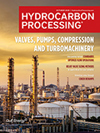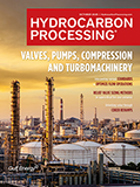Gasoline
Neste and Rolls-Royce building a strategic partnership to accelerate the shift from fossil to renewable fuels
Neste and Rolls-Royce have agreed to build a strategic partnership on accelerating the use of renewable diesel as a lower-emission solution for diesel engines.
Online Feature: Modular LNG: Why is it advantageous? Q & A with Bryan Glover, President Honeywell UOP
Hydrocarbon Processing’s Technical Editor, Sumedha Sharma sat down with Bryan Glover, President of Honeywell UOP, the hydrocarbon technology licensing and products business within Honeywell to discuss LNG and its role in the energy mix.
Guyana opens tender for its first oil refinery
Guyana has called for proposals to design, finance and build a 30,000-barrel-per-day (bpd) oil refinery, the first for the South American country as it becomes a force in crude oil production.
Kuwait's KNPC says units at Mina al-ahmadi oil refinery stopped due to malfunction
Some units at Kuwait's Mina al-ahmadi oil refinery abruptly stopped on Monday evening due to a cooling water cut, Kuwait National Petroleum Company (KNPC) said.
2022 HP Awards Finalists
<em>Hydrocarbon Processing</em>, the downstream processing sector’s leading technical publication for 100 yr, has announced the finalists for its sixth annual <em>HP</em> Awards, which celebrate innovative technologies and people that have been instrumental in improving facility operations over the past year.
U.S. imposes new sanctions on Iran oil exports, targets Chinese firms
The United States imposed sanctions on companies it accused of involvement in Iran's petrochemical and petroleum trade, including five based in China, pressuring Tehran as it seeks to revive the 2015 Iran nuclear deal.
Niger suspends oil product deliveries to Mali, except for U.N.
Niger has temporarily stopped issuing authorizations for oil product deliveries to neighboring Mali unless they are destined to the United Nations peacekeeping mission there, the government said.
India's BPCL signs MoU with Petrobras to diversify oil sourcing
India's state-run Bharat Petroleum Corp said it had signed a preliminary agreement with Brazil's national oil company Petrobras to help it diversify its crude oil sourcing.
Cameroon and oil trader Vitol reach agreement over refinery debt restructure
Cameroon's national oil refining company, SONARA, has reached a deal with oil trader Vitol to restructure its commercial debt towards the Dutch energy and commodity trading company.
Sponsored Content: An Introduction to Grab Sampling
Grab sampling, also known as spot sampling, laboratory sampling, field sampling, or sometimes just sampling—involves the collection of a sample fluid in a pipeline, tank, or system. The sample is then analyzed to help operators validate process conditions, evaluate products for environmental emissions according to local regulations, and detect whether the product is up to customer specifications.

- Borouge to supply advanced polyolefin solutions for next-generation vehicles 11/18
- BGN announces strategic MoU with XCF Global to produce and supply SAF 11/17
- KazMunayGas and Uzbekneftegaz partner to build 50,000-tpy linear alkylbenzene plant 11/17
- Chevron joins race to explore potential purchase of Lukoil assets, including refineries 11/17
- Abra Group and Sumitomo sign MoU to advance affordable SAF in Brazil 11/17
- Sonatrach signs contract for unit with Sinopec subsidiary to boost gasoline production capacity 11/17




